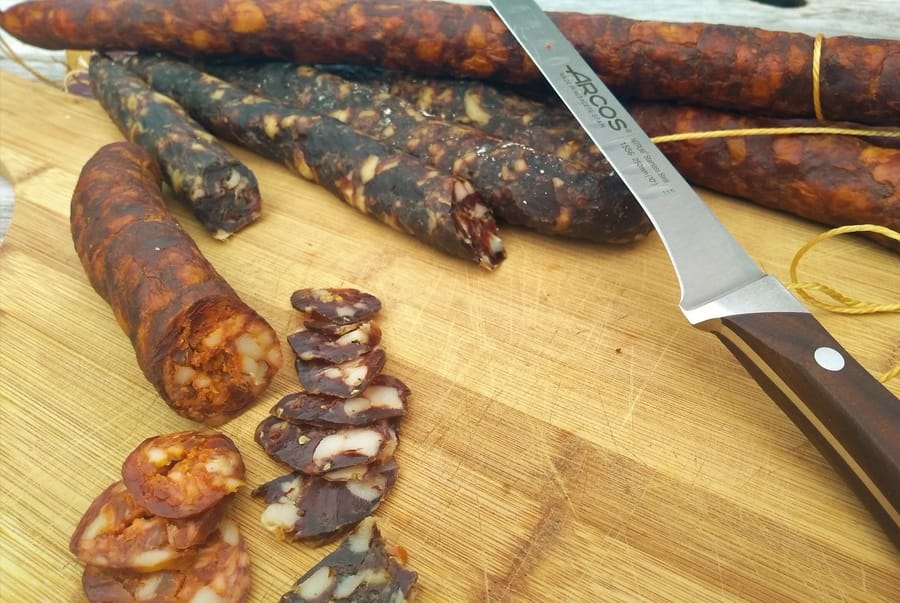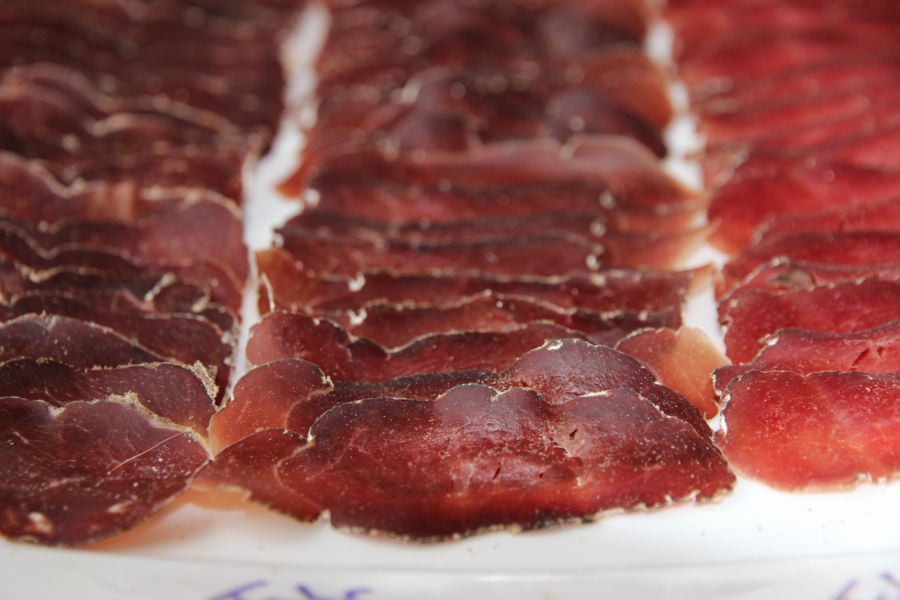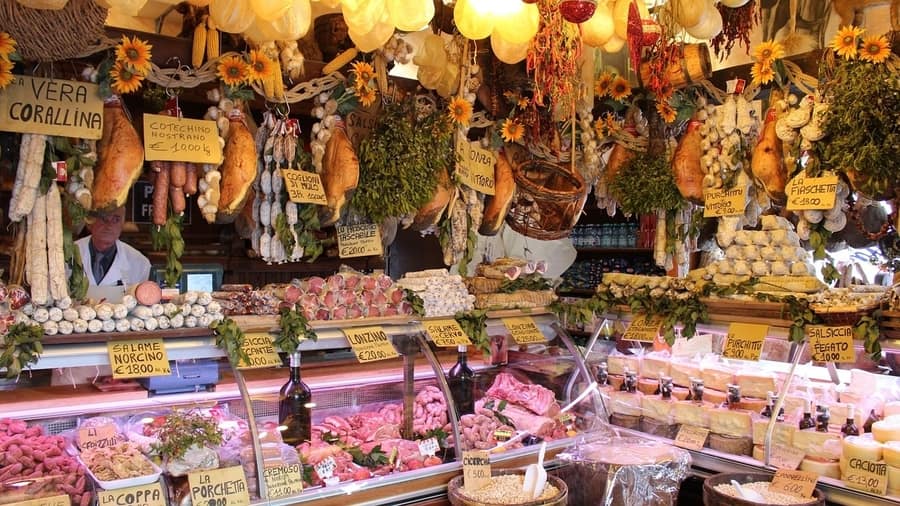Table of Contents
- How Does Charcuterie Work?
- Charcuterie – Types & How It’s Made
- Charcuterie is Dry Cured Meat and other Meat Smallgoods
- Highlight is Always The Charcuterie Dry Cured Meat
- Italian, French & Spanish Charcuterie
- Salumi – Whole Chunks Dry Cured
- Most Popular Salumi Charcuterie
- Salami – Minced Meat Dry-Cured (& Smoked Sometimes)
- The Process of Salami – How is it Made?
For decades, immersed in studying, working, learning, and teaching in the craft of meat curing, now sharing his passion with you through eat cured meat online resource.
So how does this thing called charcuterie work? This is something that gets asked often around here. What are the main reasons why it’s different from fresh meat, or bacon.
You’ve come to the right place. I’ve been passionate about charcuterie for decades, and it still fascinates me, so I will give you a quick answer and then dive into a bit more charcuterie detail.
There really are two main types of dry-cured meats that are part of charcuterie (link to charcuterie/dry cured meats category list on this site) so will explain both of these, and give an overview of how charcuterie is made, and a little bit about what it’s all about.
And, when it comes to charcuterie boards, the main attraction is always the charcuterie dry-cured meats that are selected.
How Does Charcuterie Work?
Charcuterie Dry-cured Meat has salt, spices & sometimes preservatives added to the meat so the unwanted bacteria cannot thrive. The dry-cured charcuterie has to lose 30% of its weight, to be preserved, with water activity inside the meat reduced considerably. It is then considered shelf-stable.
Traditional fat was also used in France to preserve meat in jars (confit). Rillettes are made using this style.
Other styles of charcuterie meat, can be cooked such as Pates.

These techniques go back more than 2000 years; during Roman Times, there is evidence that pork and salt were put together using the same techniques that are used today to produce dry-cured charcuterie (Parma Prosciutto Ham is the finest dry-cured meat and made the same way as the Romans!).
This is otherwise known in Italy as the Salumi category, which I’ll discuss below.
I have been lucky enough to see charcuterie and dry-cured meat produced in various ways worldwide. But when you break it all down, it comes back to the same important ingredient: sea salt.
Now, I’ve continued to learn and teach many aspects of charcuterie – it’s a massive topic that is hardly understood in the culinary industry.
Charcuterie – Types & How It’s Made

The salt inhibits the meat and draws out some of the moisture. It also creates an environment inside the meat where unwanted bacteria struggle to survive, as opposed to fresh meat.
The biggest challenge, especially when curing meat, is to put salt on it to dry-cure and preserve – without it getting too salty. There are some useful tools nowadays for this I can share with you.
Luckily, with the modern development of dry-cured charcuterie, precision can be had, and it allows you to choose the level of saltiness whether it’s dry-curing charcuterie or the other popular method using a wet salt brine solution which achieves the same preserving effects.
So let’s get into a bit of detail about the two main types of dry-cured charcuterie, which are whole muscle “salumi” and dry-cured “salami” (I know they sound very similar).
Charcuterie is Dry Cured Meat and other Meat Smallgoods
Charcuterie used to be traditionally defined as a French style that included some dry-cured salami, rillettes, pates, and certain products when using animal offal (like Andouillette sausage).
The modern interpretation of charcuterie (especially with the marketing of charcuterie boards) is about dry-cured meats that you put on an antipasti or meat and cheese platter (meat and cheese platters are what they were called in the 1980s quite often).
Antipasti is a classic Italian style of charcuterie dry-cured meat with a fine selection of cheeses typically.
Highlight is Always The Charcuterie Dry Cured Meat

I’m sure you’re wondering why charcuterie dry-cured meat gets all the attention.
It’s because it’s not just about following a recipe. There are a few other factors that come into play to produce real dry-cured meats- which makes this a craft.
Such as:
- A precisely followed recipe
- Accurate measuring tools
- Quality ingredients (spices, salt & meat)
- Patients and Time
- Good bacteria i.e. penicillin
- Suitable environment (temperature and humidity)
- Quality fresh meat
- Nitrates & Mold Cultures
However, the rewards of crafting your charcuterie are epic.
Salt and Spices
You apply a curing mixture to the meat, the ‘curing’ aspect. This goes to work using the salt to inhibit the meat.
Depending on the size of the dry-cured meat, curing the meat can take one to two weeks for a pancetta pork belly or up to 1 to 2 months for a whole prosciutto pork leg. Sometimes it’s washed with wine, not depending on the dry-cured meats being made.
Then, the drying-out phase begins (sometimes with cold smoke sessions also).
The meat is hung, this is to minimize contact with surfaces to avoid the chances of contamination.
In places like Parma, where they make Parma de Prosciutto (prosciutto is eaten raw and I wrote why here) Ham (and Culatello (deboned hind leg style of prosciutto), it is close to a body of water and therefore has higher humidity (moisture in the air), so the traditional cured meat storage areas have massive legs dangling down throughout, like this (to be Parma Ham, it has to come from Parma and be drying for a minimum of 1 year- the taste is so phenomenal if you haven’t tried it).
Commercial producers have controlled environments for the two to three months of drying, then they can sometimes be hung in more natural conditions inside the proscuitto production facilities.
I have been using for many years now my DIY homemade dry curing chamber, which is able to control humidity and temperature with simple off-and-on thermostats, humidifiers & dehumidifiers.
This is the same process, that is done on a large commercial scale also in some places.
It isn’t necessary to produce dry-cured charcuterie; you can hang homemade charcuterie in your house – if the condition is approximately right.
There are also ways of making dry-cured charcuterie in a normal kitchen fridge; I have explained this on another page. You can find it here.
The meat is hung, sometimes tied, sometimes sprayed with some flavored good cultures (that’s why your salami has that white powdery stuff on the outside – it’s penicillin -another useful aspect).
And then it comes down to patience and time.
It still boggles my mind that Spanish Iberian Ham (Jamon) or prosciutto Parma Ham are dried and aged up to five years, which you also pay a decent amount of money for.
I’ve vacuum packed finished deboned lamb prosciutto for up to 4 years so far, quite complex in flavor!
Since the meat has a reasonable saltiness, the key is wafer-thin slices.
Which can be cut by hand, but a precision deli meat slicer is the proper way. Look at some of these delis in Italy I have visited; they sometimes have 6 to 12 delis slices probably each worth $5k to $8k US each, incredible.
But the dry-cured meats are sliced to order as part of the culture across Italy and other European countries.
Italian, French & Spanish Charcuterie
The French are more about the classic fare (rillettes, terrines & pates) or salamis. The Italian and Spanish classic charcuterie has many types of whole muscle dry-cured meats (loin, belly, etc). And minced meat that has also been dry-cured otherwise known as salami.
Salumi – Whole Chunks Dry Cured
Seven parts of the pig represent classic Italian Salumi, some of which you may be familiar with, Salumi also includes the midst meat salami, dry-cured meats, and charcuterie.
The whole muscle chunks of dry-cured charcuterie follow the same process above.
Check out my page on Salami vs Salumi for more details on salumi muscle groups.
Most Popular Salumi Charcuterie

Parma Ham, prosciutto, Iberian Ham (Jamon)– the interesting thing is all the whole pork legs have been charcuterie dry cured.
Another one of the most popular cuts is the mighty pancetta pork belly, with its various types of spices used. Some people think it’s bacon but it’s not, only a few regions across Italy cold smoke the pancetta.
Bacon generally has salt, sugar and is cold-smoked over several days (but there is so many variations of bacon as well).
There is one Salumi that’s not pork (here are some others), and the classic Italian interpretation is called braesola which is the eye of round from the cow, very solid meat, hardly any fat, and flavors of cinnamon and nutmeg are subtly applied, a few other spices meld together to make this delectable treat.
Salami – Minced Meat Dry-Cured (& Smoked Sometimes)
When it comes to charcuterie dry-cured meat, salami creates a beautiful mouth feel – slight acidity from the fermentation, salt and seasoning, and tat. It typically has a good percentage of pork fat.
Many salamis are also cold-smoked, giving them extra complexity and flavor. The process is slightly different compared to the Salumi -whole muscle charcuterie dry-cured.
Dry-curing minced meat is probably one of the more advanced dry-cured charcuterie projects.
The Process of Salami – How is it Made?
It’s kind of similar to Salumi but a little bit different as well.
The main thing is that salami has a fermentation stage at a warmer temperature to lower the acidity pH level, which does a couple of things.
Not all salami is done this way, but I am focused on that classic dry-cured charcuterie (I also have hot smoked salami).
The pH level will affect the tangy flavor of the salami (this is adjusted through different cultures). But it also helps make the minced meat environment inside the sausage casing a more inhospitable (challenging to survive) environment for bacteria you don’t want in the salami.
In my opinion, the hardest part of salami making is ensuring that there are no or minimal amounts of air/oxygen inside the casing since this can lead to spoilage.
But the same thing with the dry cured sausage salami happens, where you want to dry out, to a point where it is preserved and safe to eat. Which is around 35 to 40% weight loss from the starting weight (the golden rule for dry-cured meat). So you begin with 1-kilogram salami once it has been stuffed into a casing. Then, it ends up being about 650 grams or less (the metric system makes this example more accessible).
Cold smoking (cold smoking or charcuterie flavors; I wrote about how they taste) is also used for flavoring and drying out the meat. Basically, cold smoking is just drying using smoke also to help. Since deciduous smoking wood (or any wood that burned maybe) carries anti-bacterial and anti-fungal properties (another method of assisting preservation), this cold smoking has also been around for thousands of years. The European community is fond of it, and you can find numerous variations across the countries.
Most Popular Salami Charcuterie
Pepperoni but it’s really just the development from the classic Italian the Dry Cured Picante Salami I think.
Genoa Salami with its white and black peppercorns, garlic, and wine – an absolute classic.
There are thousands of variations worldwide now, with so many various meats.
Don’t try CatFish Salami in Hungary – you have been warned!


Comments
Would like to learn more about curing meat.
Awesome, check this our or my course! Link at top of each page, https://eatcuredmeat.com/how-to-cure-meat-at-home-complete-illustrated-guide/